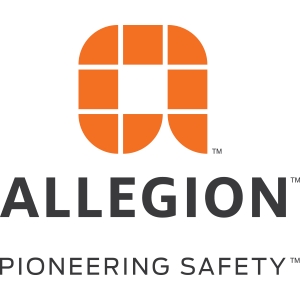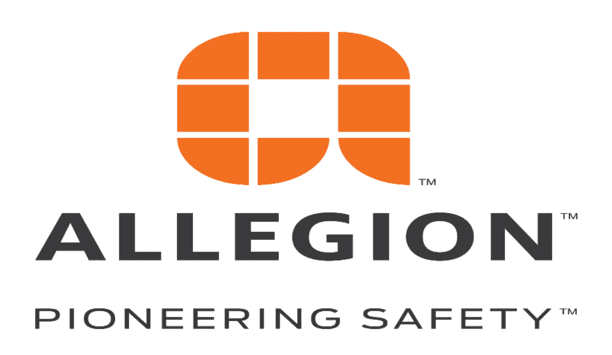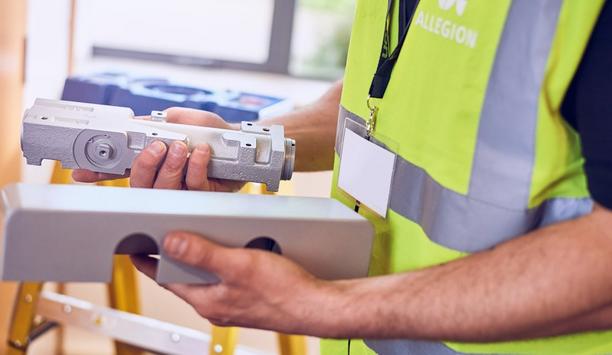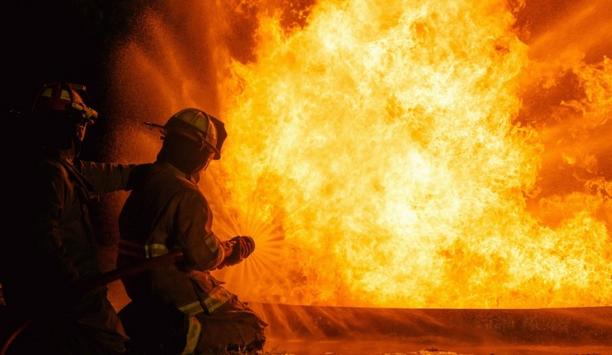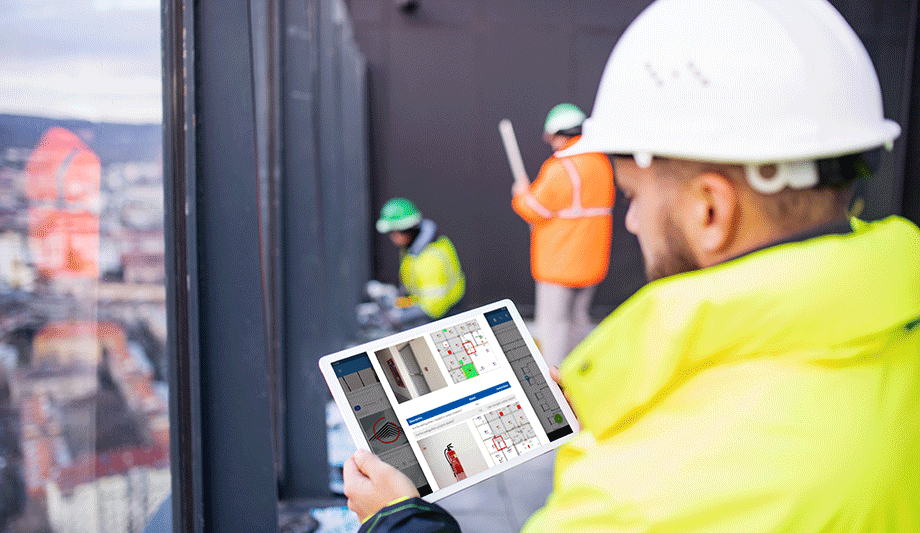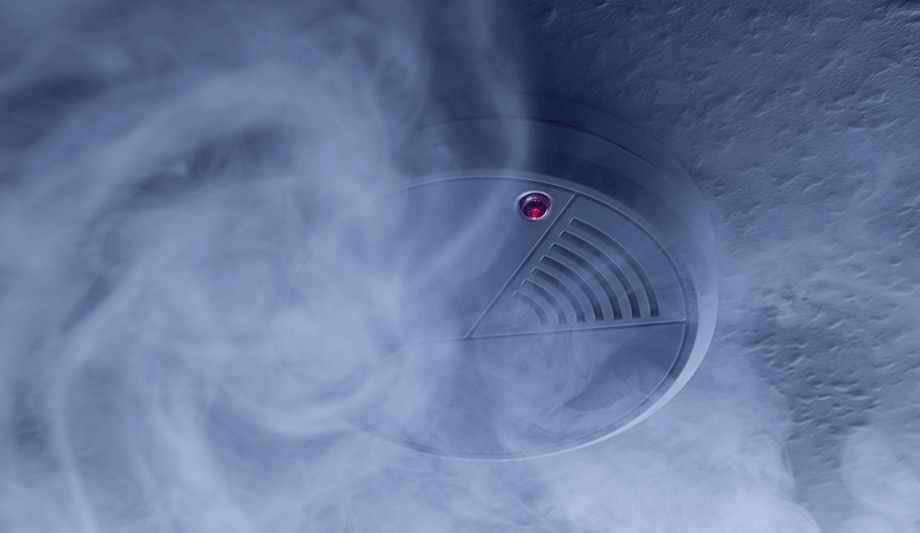Allegion - Experts & Thought Leaders
Latest Allegion news & announcements
Allegion UK, alongside its family of pioneering door hardware brands, is set to present a complete fire door solution at The Fire Safety Event, taking place between the 8th and 10th April at the NEC, Birmingham. With a focus on keeping people safe where they live, learn, work and connect, Allegion’s team of experts will be on hand with specification, installation and maintenance advice at this year’s event, and will showcase a flagship range of fire door solutions, including architectural hardware, fire and smoke seals, vision panels and an intumescent fire block louver system. Set of tested and certified products Allegion is inviting visitors to stand 4/K106 where they can experience three full-sized door models To demonstrate the crucial role that fire door hardware plays in fire safety, Allegion is inviting visitors to stand 4/K106 where they can experience three full-sized door models, each displaying a harmonized set of tested and certified products suitable for timber and steel fire doors. Throughout the three-day event, Allegion will also exhibit a working model of its unique XB120 automatic door operator from Boss Door Controls. Available in a choice of seven high-quality finishes, ranging from ‘Light Bronze’ to ‘Matt Black’, all finish options are designed to enhance all architectural styles. Key element of passive fire protection Speaking on their plans for the event, Pete Hancox, country manager at Allegion UK, commented: “Fire doors are a key element of passive fire protection, and in the event of a fire, it’s crucial that essential door hardware has been expertly specified, correctly installed and properly maintained." "As part of our ongoing campaign to raise awareness and reduce knowledge gaps in these areas, we’re delighted to return to The Fire Safety Event, as it provides the perfect platform to offer valuable expertise and support to a key audience." Highest standards in fire safety management Hancox added: “We will be showcasing the Allegion family of brands at this year’s event and plan to offer visitors true peace of mind by presenting a complete fire door solution that combines a range of our certified, highly-engineered and third-party tested fire door safety products. Our team of experts will also share real-time installation advice, with live demonstrations of our unique self-adhesive Accufit system, which has been enhanced to facilitate easy and accurate installation of our Briton door closers.” The Fire Safety Event supports industry practitioners, professionals and organizations in achieving and maintaining the highest standards in fire safety management, and provides visitors with the perfect opportunity to observe the latest products, technology and solutions in fire safety.
Allegion UK, a pioneer in fire safety hardware and manufacturer of ‘Briton’ door controls, has expanded its library of customer support materials with new installation videos for its highly popular 2003 and 2003V surface-mounted door closers. Aim to publish a video Allegion’s newly published video series provides customers with an illustrative set of installation and adjustment instructions for door mount pull, transom mount, and parallel arm mount fixings across its major product lines. With each video, Allegion aims to improve the accuracy of door closer fittings by delivering a comprehensive walkthrough of the 2003 and 2003V installation process, from the product unboxing to its fixing methods and measurements, as illustrated by Briton’s unique self-adhesive Accufit template system. Step-by-step installation guidance Allegion will shortly complete a suite of digitally curated support materials, which includes technical datasheets With plans to further develop the video library to include step-by-step installation guidance for the Briton 2130B overhead closer, Allegion will shortly complete a suite of digitally curated support materials, which includes technical datasheets, product certifications, fixing templates, and downloadable service and maintenance instructions. Speaking on the ambitions behind the new installation videos, John Fairhurst, business development manager at Allegion UK, commented, “Where the safety of buildings and their occupants is reliant on fire door hardware, we too often identify inaccurate installation as a leading cause for inadequate product performance." Fire door safety standards "To prioritize fire safety, we believe it’s crucial to eliminate the issues associated with incorrect hardware installation, and by adding short and engaging video content to our resources, we can further support our customers in this area." “Driven by our ongoing commitment to improving fire door safety standards, and following the success of our updated Accufit system for the 2003 and 2003V, we have also developed a new Accufit template for the Briton 2130B, which is available now and will feature in a standalone series of installation videos set to launch later this year.”
Allegion UK, a pioneering name in fire safety hardware and manufacturer of ‘Briton’ door controls, has launched a new ‘Fire Door Hardware Fundamentals’ guide, designed to support responsible persons through the latest fire safety regulations and fire door hardware best practice. The newly published guide draws upon key insights from Briton’s pioneering industry experts, and in response to the UK’s developing regulatory framework, aims to deliver accessible information on the Fire Safety Reform Programme and the responsibilities associated with fire door safety. Fire Door Hardware Fundamentals Allegion’s guidance details the pivotal issues associated with fire door safety in the current landscape Allegion’s guidance details the pivotal issues associated with fire door safety in the current landscape and looks to further raise awareness on the role of fire door hardware, before sharing trusted advice on specification, installation, and maintenance. Now available digitally, electronically and in print, the Briton ‘Fire Door Hardware Fundamentals’ guide intends to assist responsible persons, duty holders and trade professionals by providing the foundations and frameworks needed for planning, delivering and maintaining fire door safety strategies in UK buildings. Latest Briton fundamentals guide Speaking on the launch, Pete Hancox, country manager at Allegion UK, commented: “Fire door safety impacts all of our lives and following the latest period of legislative updates, there has been continued discourse concerning accountability, competence and collaboration." "At Allegion, we help keep people safe and secure where they live, learn, work and connect and we believe it’s more important than ever before to understand essential procedures, standards and set guidelines, and in launching our latest Briton fundamentals guide, we’re aiming to bridge the gap between awareness and expertise by providing an invaluable resource to our customers." Fire door hardware specification Hancox added: “Our experience shows us that fire door safety is often compromised due to incorrect fire door hardware specification, poor installation and lack of maintenance and providing a broader understanding of these areas has been crucial to our campaign." "Briton experts share extensive knowledge and know-how in these areas and by applying it throughout this guide, we’re able to deliver a timely and unique piece of literature packed with insightful advice, useful checklists and helpful terminology support.”
Insights & Opinions from thought leaders at Allegion
Building safety has always been an ever-evolving landscape of legislation and regulatory frameworks. The industry strives for stronger construction safety practice and in doing so, the need for reliable, transparent and accessible product information is clear - especially when fire door safety compliance is on the line. It was in response to the Grenfell Tower fire and Dame Judith Hackitt’s review that the Building Safety Act 2022 was passed, which has since looked to introduce a number of ground-breaking reforms to improve fire safety standards and facilitate greater accountability across the board. Fire and structural safety information A key component of the regulation has been the need for duty holders to retain fire and structural safety information A key component of the regulation has been the requirement for duty holders to retain fire and structural safety information, making it necessary to manage an accessible digital record of decisions and updates throughout a building’s lifecycle. This "Golden Thread of Information," as it’s known, has placed a renewed focus on the presentation and management of construction product information and ensures the right people have the right information at the right time. Driving standards and saving lives From a single source, building owners, developers, regulators, and residents are given a greater understanding of the materials and assets used during the construction process, as a way of driving standards and saving lives. With emphasis shifting from product performance claims to verified, traceable assurances, there has never been a better time to assure peace of mind when it comes to fire door safety. Fire door confidence The Building Safety Act recognizes the importance of fire safety systems and mandates that the Golden Thread of Information must include comprehensive data on all fire detection and prevention systems in high-risk buildings, including fire doors. As a vital element of passive fire protection, fire doors and their hardware are often the first line of defense As a vital element of passive fire protection, fire doors and their hardware are often the first line of defence against fire and smoke, and as such are a legal requirement in all non-domestic properties and houses in multiple occupation. To operate as intended, fire doors will call on their various hardware components, including hinges, latches, seals, door closers and opening mechanisms, meaning they are only as effective as the weakest link in their assembly. Maintenance of fire door hardware is key As such, the correct specification, installation, and maintenance of fire door hardware is considered crucial if a building is to meet both its functional and safety standards. With that, decision makers must be confident they can identify the necessary hardware for their building, and in doing so, must also ensure components are fit for purpose and comply with UK Construction Products Regulations. UKCA and CE certifications To assist duty holders in meeting these expectations, conscious manufacturers have stepped up, and as part of the Golden Thread regulatory framework are providing more detailed information in the form of product datasheets, installation guides, and training portals. From a compliance standpoint, decision makers can instantly check a product’s associated Declaration of Performance (DOPs) to show hardware conforms to the correct testing standards and UKCA and CE certifications, as well as Environmental Product Declarations (EPDs) when looking to conform to the latest environmental benchmarks. With this information, those involved in product selection can assure their installed fire door hardware will perform when it is called upon. Transparent product information Transparent product information is also useful when it comes to maintenance periods Transparent product information is also useful when it comes to maintenance periods and conforming to Approved Document B, with amendments made as recently as March 2025 focusing on Regulation 38, which states that “the person carrying out the work shall give fire safety information to the responsible person no later than the date of the completion of the work, or the date of occupation”. By providing this material, manufacturers are offering improved traceability on products and their performance, empowering duty holders to comply with legal obligations and keeping occupants safe in the process. Transparency equals opportunity Data is a critical resource in decision making and with several schemes evolving such as the Golden Thread and the Code for Construction Product Information, a real strategy is forming. Where information is accessible and no longer ambiguous, the industry is fostering a proactive culture of collaboration, further transitioning from reactive compliance-driven tasks to a more effective method for tackling fire door safety and building design as a whole. Latest standards and hardware options Outside of duty holders being able to demonstrate compliance by showing how they are managing risks throughout their buildings, there is perhaps a greater opportunity presented with clear communication among stakeholders. Outside of duty holders being able to reveal compliance by showing how they are managing risks Where it’s imperative for industry professionals to remain informed on the latest standards and hardware options, a collaborative approach can lead to better and more informed design choices that continue to deliver post-project delivery and improve fire safety outcomes. Furthermore, with information readily available, there is an opportunity for early identification of potential hazards and vulnerabilities. For existing projects, decision makers can check what hardware product has been used and where, deciding if it has been suitable and further reducing the use of ineffective options and avoiding costly retrofits when the time has come to repair or replace products. Fire door safety products From an operational perspective, when reliable product information can be accessed and assessed instantaneously, duty holders are able to streamline their decisions-assuring any changes or issues with fire door safety products are rectified quickly and actioned efficiently. The Golden Thread is setting the standard and protecting all stakeholders in the process With this holistic approach to information sharing, building and fire safety management becomes a shared duty. The Golden Thread is setting the standard and protecting all stakeholders in the process - helping to build trust in an area it is most needed. The use of traceable and transparent product information means the approach to fire door safety and building management is changing and the industry is urged to continue building upon this culture while navigating the latest standards. Traceability is no longer a burden of best practice-it’s an industry expectation and equally, a golden opportunity that must not be missed. How Allegion UK Can Help Allegion UK is committed to supporting transparency and traceability in construction and has a wealth of product information resources to help professionals undertake product selection, installation, and maintenance checks on fire doors and hardware. For information on product selection and installation, please speak to experts or head to the download center for technical fitting instructions and product certifications. Allegion UK also proactively participates in the EPD program, with full EPD documentation available for download on Briton products, based on ISO 14025 and EN 15804 environmental declarations, from the Allegion and Briton websites.
Fire doors are designed to save lives. When closed, they form a crucial barrier against smoke and fire and provide vital time for occupants to escape in an emergency situation. An open fire door on the other hand is rendered useless in the event of a fire, and for this reason, fire door closers are equally recognized for their life-saving capabilities. The relationship between fire doors and fire door closers is synergetic in fact, with both considered key elements of a building’s passive fire protection system. When a fire door must close to completion during a fire incident, it will always rely on its mechanical closing device to do so effectively. Door closers - essential operational component Door closers are an essential operational component and must be capable of closing the door leaf from any angle of opening and strong enough to overcome the resistance of any latch seal, ensuring the door is held firmly in place by its frame. Specifiers and decision makers alike must be confident in their door closer selection While all fire door closers serve this same function, decision makers are reminded that an incorrectly specified door closer can compromise the integrity of an entire fire door assembly. With different project requirements and hardware options available, specifiers and decision makers alike must be confident in their door closer selection. Where occupant safety is on the line, what should specification teams look out for? Fire door closers are key to fire door safety Kirk Smith of Allegion UK, explains: “Fire door closers are paramount to the success of fire door safety and specification should be a structured process to ensure appropriate closers are chosen at each touchpoint.” He adds, “There are various types of door closers available on the market, but whether concealed or surface-mounted, all controlled door closer models use spring hydraulics to close and engage fire doors onto their latch, allowing buildings to compartmentalize areas and provide occupants with vital escape routes. To perform this task, fire door closers call upon a number of elements including: the door closer mechanism, mounting hardware, arms and links.” Door closers tested to EN 1634, UKCA, CE standards Kirk Smith continues, “There are often a number of considerations to make when choosing between door closer products. In any instance, specifiers must first establish whether their door is a fire door or a non-fire door, for example. To ensure a closer is fit for purpose and meets fire safety compliance, all door closers installed on fire-rated doors must be tested to EN 1634 and UKCA and CE marked.” He further states, “Mechanical variants must also conform to EN 1154 and electromagnetic hold-open devices to EN 1155, which test and classify hardware over its category of use, number of test cycles, power size, fire behavior, safety and corrosion resistance. A Declaration of Performance (DoP) must also be reviewed to ensure a door closer is certified when fitted with backcheck or delayed action.” Kirk Smith adds, “From an operational viewpoint, it’s important that a chosen door closer meets the needs of a building and its users too. Buildings with high footfall will often benefit from an electromagnetic hold-open device, which keep certain fire doors open until a fire alarm is activated, in which the system will automatically release and close doors to completion.” Surface mounted closers are the most durable and common type of door closer Selecting the most appropriate door closer Kirk Smith continues, “The size of a door can sometimes be a key factor when selecting a door closer too. Unusually tall or heavy doors may often require a door closer with a higher power size, in accordance with EN 1154 - it’s key to remember that fire doors require a minimum Power Size EN 3 to conform to this standard.” He adds, “Should a specification team be unsure about the size of the door, it is often best practice to choose a door closer unit that can be adjusted during the installation stage.” Durable in application Regardless of where a fire door may be positioned, operation must always be controlled Regardless of where a fire door may be positioned, its size or how it may be used, operation must always be controlled, as this will prevent future damage to the door and its frame - which can be a crucial step towards retaining fire safety performance. Kirk Smith continues: “Surface mounted closers are the most durable and common type of door closer, with units mounted to the surface of the door or frame with a quick and simple installation process. Comparably, concealed door closers are fitted within the door leaf and frame and while providing the functionality of a surface mounted closer is hidden from view as a way of enhancing aesthetics.” Most common ways to fit a door closer Kirk Smith adds, “When reviewing the mounting requirements, it’s important to consider door closers can be installed in different ways, often depending on the application.” The four most common ways to fit a door closer are: Figure 1 door mount fixing: where the closer body is mounted on the pull face of the door Figure 61 transom mount push side: where the closer body is mounted on the transom, on the push side of the door Figure 66 parallel mount push side: where the closer body is mounted on the push side of the door Slide track fixing: where the closer with slide arm and track is door or transom mounted, on either the pull or push side of the door Door closers with adjustable backcheck Kirk Smith states, “Specifiers must also evaluate whether backcheck control is necessary. Door closers with adjustable backcheck can better control the speed of the door, slowing it down prior to making contact with a door stop or before reaching the fully open position. This function prevents or minimizes damage to the door, hardware and adjacent walls, which would otherwise be caused by the door being forcefully open or caught by a gust of wind.” He adds, “Equally, specifiers must consider whether a door closer requires delayed action. A delayed action closer offers a period of delay from when the door is opened to closed, which is usually set to be a maximum of 25 seconds (recommended for fire doors). This functionality makes delayed action closers ideal for environments that require easy passage, such as doors used by children, the elderly or wheelchair users, for example.”
Healthcare environments are synonymous with caution, wellness and safety. Though, where National Health Service professionals work determinedly to meet the needs of their patients, equally as vital are the fire door safety procedures practiced throughout NHS premises. Fire safety management plays a crucial role in all healthcare settings, where protecting staff, visitors and potentially vulnerable patients is a continuous effort. Highest level of fire safety A survey led by BWF found that 52% of respondents felt hospitals provided fire safety Even with a host of unique operational challenges, hospitals, for example, are often considered to be one of the safest public buildings. In fact, a survey conducted by The British Woodworking Federation discovered that 52% of respondents believed hospitals to provide the highest level of fire safety in a building. Set of fire safety issues Despite these perceptions, NHS data has previously reported a concerning rise in fire incidents across sites around the country. The inherently busy nature of healthcare settings and around-the-clock use of facilities containing vulnerable patients, medical equipment and even flammable materials, presents a complex set of fire safety issues that must be addressed. With that in mind, is there perhaps more work to be done to ensure fire door safety is approached professionally to further mitigate risk? Fire door safety is professionally implemented to further mitigate risk. Health and fire door safety Fire doors play a vital role in protecting each of those individuals, but when paired with the fast-flowing traffic In the three months ending January 2025, an average of 46,000 people visited major hospital A&E departments each day in England, with a further 27,300 visitors attending minor A&E facilities every day. Fire doors play a vital role in protecting each of those individuals, but when paired with the fast-flowing traffic often found in healthcare facilities, this sustained level of footfall can create relentless environments that are unforgiving on fire doors and their hardware. Passive fire protection As a critical element of passive fire protection, fire doors are designed to compartmentalize fire and smoke for a specified period of time. Where fire could spread quickly across the interconnected sections of healthcare estates, fire doors will form protective barriers for a minimum of 30 minutes (FD30) or 60 minutes (FD60), allowing occupants to escape and preventing potentially life-threatening smoke inhalation in the process. Doors are designed to compartmentalise fire and smoke for a specified period of time. Fire doors in healthcare settings Fire doors can only operate effectively when working in tandem with their hardware components Fire doors can only operate effectively when working in tandem with their hardware components, such as hinges, seals, and fire door closers. Yet, all too often in healthcare settings, fire doors and their hardware become damaged and fall victim to improper maintenance and use, with some self-closing doors even propped open to improve the flow of traffic and ease of access for beds, wheelchairs, and medical trolleys. In turn, this leaves closers disengaged and renders doorsets useless in the event of a fire. Effective fire safety procedures Under the Regulatory Reform (Fire Safety) Order 2005, healthcare management teams are given a direct responsibility to ensure employees and patients are safe within their premises. With this, NHS trusts must nominate a ‘responsible person’, which is often an individual who possesses a legal responsibility to demonstrate effective fire safety procedures, undertake risk assessments and meet fire safety compliance. In demanding healthcare environments, regular fire door inspections are key, and as part of their duties, a designated responsible person must have a firm understanding of fire door checks and maintenance, whilst also raising staff awareness on the importance of fire door safety. For this, ongoing education is key. In healthcare environments, regular fire door inspections are key. Prevent and protect In order to retain the integrity of a fire door and its components, healthcare estates must consider how accurate specification, professional installation and ongoing maintenance can help to reduce common hazards and the possibility of danger before it surfaces. Routine fire door checks can save lives and should form the agenda of anyone responsible for fire safety management. They consist of reviewing the specification, installation, condition, and certification of: The door furniture The hinges Locks and latches Door closers Hold open devices Signage Exit devices Door seals The gaps around the door (3mm is recommended for fire doors) UKCA and CE certifications Fire doorsets must pass a series of standardized tests in the form of UKCA and CE certifications When performing a closing action, a fire door calls upon each of these components and as such, not one element can fail in the event of a fire. To meet the necessary standards, the complete fire doorset must pass a series of standardized tests in the form of UKCA and CE certifications, which healthcare officials can identify - alongside a fire door’s FD ratings - by reviewing the label, usually found on the top edge of the door. Fire door regulations Correct specification is essential to long-term performance too. For high-use areas in large hospitals, for example, electromagnetic hold-open devices are a more appropriate choice and allow fire doors to close once a fire alarm is activated, automatically releasing the door in a safe and controlled manner. In smaller, slower-paced settings, cam-action closers with slide arms can fulfill fire door regulations whilst providing ease of operation and accessibility for vulnerable users who may otherwise struggle with heavy doors. Cam-action closers with slide arms can fulfil fire door regulations. Regular maintenance plan for fire doors All healthcare facilities must look to implement a regular care plan for fire doors Regardless of size, layout and the building’s needs, all healthcare facilities must look to inherit a regular maintenance plan for their fire doors and emergency exit routes. In doing so, teams can highlight any early signs that a fire door is not performing as it’s required to, which can help prevent irreparable damage to the door and its hardware - saving the need for replacements and reducing costs for establishments managing budget restraints. When a fire door and its hardware are no longer compliant, teams must ensure repairs and replacements are made quickly and at a professional standard. Fire door safety measures Fire door safety is an ongoing responsibility for healthcare management teams and requires comprehensive planning and regular action. Where patient safety remains the primary focus, a proactive approach is necessary. As such, healthcare officials are urged to pay close attention to their estate’s fire door safety measures, because although fire is unpredictable, it is in most cases preventable.
The New Future For Fire Agencies
DownloadThe Eight Key Trends in Fire Detection in 2023
DownloadA Digital Platform to Improve Fire Safety Compliance and Inspections
DownloadOvercoming the Challenges of Fire Safety in the Paper Industry
DownloadCarbon Monoxide: Creeping Killer Caught In The Act
DownloadBriton 2003V Overhead Door Closer
Briton 1120B Overhead Door Closer
Briton 2700 Cam Action Door Closer










